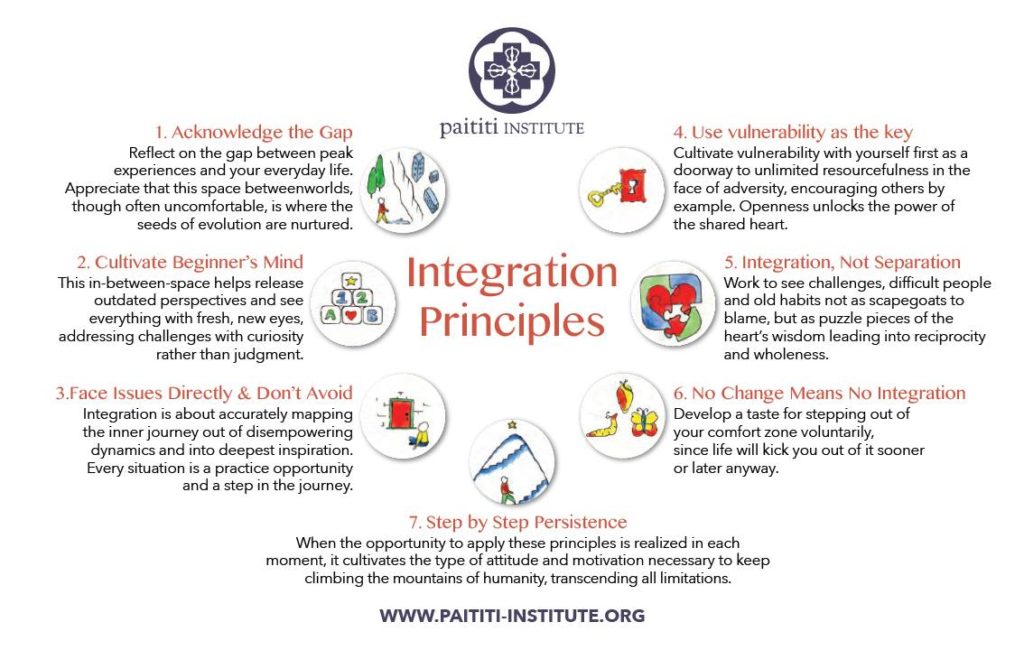Integration: Phenomenal into Mundane
posted by Roman Hanis on June 8th, 2018
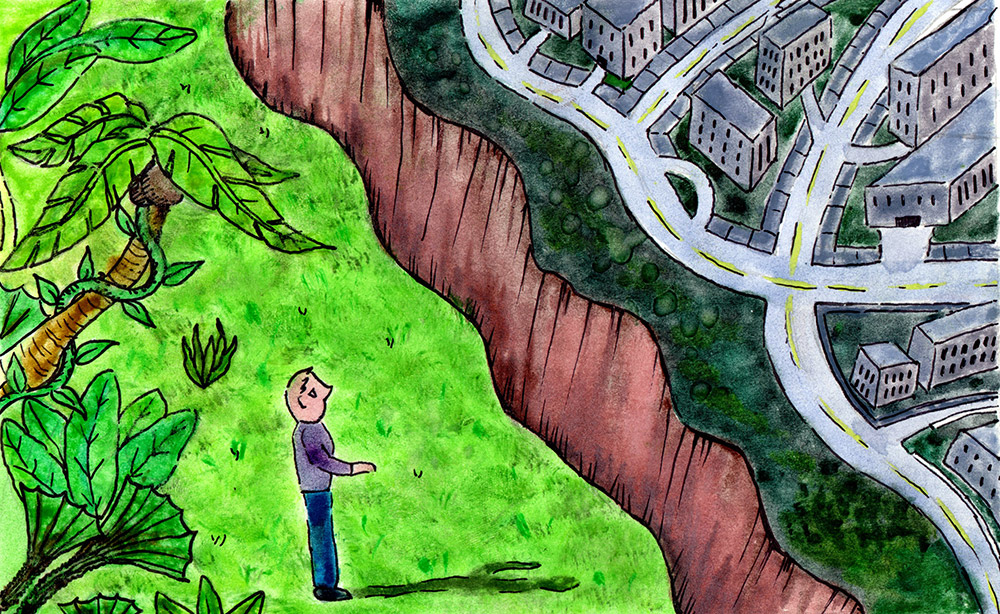
This topic has been instrumental in my life and seems relevant for many people today. Discovering how to bring natural well being into the adversity of existence opens the doorway to lasting happiness. We’ve all undergone an array of wonderful and dreadful events in life and I think it’s fair to say that everyone wishes to face life’s challenges effectively.
Increasingly, I hear the latest buzzword, “integration,” without a clear definition of what it is, except that it’s important. How does this “integration” process relate to shattering life experiences, inner exploration, or sacred plant ceremonies, and what does it mean for your everyday life?
Mowgli Syndrome
One example is when I found myself in a tough spot in 2004 after emerging from 3 continuous years studying an ancient healing art from indigenous elders in the heart of the Amazon rainforest. The curriculum entailed healing by understanding the entire scope of causes behind ailments and afflictions in myself first, so I can then be useful to others.
These traditions view consciousness as the main healing agent and the healing journey as the greatest art in the universe – the art of consciousness transformation. I discovered this ancient art’s underlying principles run parallel to other disciplines I’d become familiar with prior to visiting the Amazon, especially Jungian transpersonal psychology and Tibetan Buddhism.
Integration plays a major role in these approaches, because they share a common focus: transcending the shadow of the human condition through direct insights relevant to one’s constantly unfolding journey, thus revealing life itself to be the greatest teacher. With each tradition’s unique angle on a shared purpose, they complement one another, together offering deeper perspectives into the nature of existence. Since insights are only meaningful once tested in all weather conditions, the final exam took place when I exchanged the supportive cradle of the rainforest for the other extreme: a major metropolis.
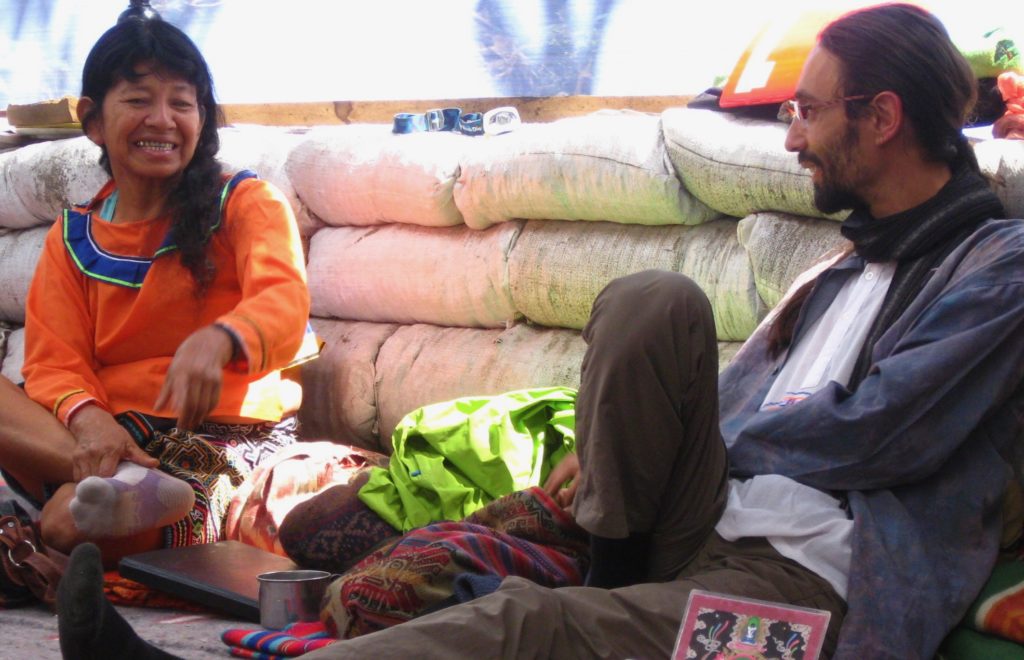
With such a great gap between cultures, lifestyle and environment, I had a rough time integrating back into society. I called it the Mowgli Syndrome back then, finding myself unable to identify with either culture, compelled to apply all that I learned in uncharted territory. Eventually, this challenging in-between no-man’s-land proved a great blessing in disguise, allowing me to become a bridge between these two worlds, integrating essential facets from all experiences into my evolutionary journey.
My indigenous teachers never asked me to forfeit my cultural background in favor of theirs or to keep holding on to my own cultural identity. Instead, they focused on rekindling the freedom of undiscriminating openness we all knew in early childhood. Nowadays, my 11-month old son teaches me a lot about this beginner’s mind.
In today’s world where all cultures collide, many people get lost trying to find themselves in the midst of all the turmoil. Beyond cultural identity, recognizing those universal childlike qualities is an important step for objective learning to take place. The genuine teachers in my life were those who did not hide underneath any roles or identities, but real human beings I got to know by living alongside them every day, witnessing how resiliently they applied their wisdom lineage to every challenge, hardship, and misfortune.
Hijacking the Phenomenal
Many of my acquaintances have a particular spin on integration, bombarding themselves with mind boggling experiences (such as psychedelics, plant medicine ceremonies, extreme sports, among others) in steady intervals as a substitute for the lack of extraordinary in everyday life. These otherworldly getaways become pressure release valves that maintains “sanity” while tunnel-visioned in conditioned existence, creating the illusion of a “secret advantage” over other society members.
Integration then degrades into managing the tedious weekdays until the next phenomenal extravaganza. I was tempted by this idea myself during my late teens, but the main insight I discovered was that such a lifestyle did not offer me lasting fulfillment. Like a pendulum in full swing, I went to the opposite extreme, residing in the Amazon before realizing the middle way.
While the weekend warrior or jungle hermit approaches can be useful to an extent, without willingness to fundamentally question one’s own deepest purpose, by merely adapting to an unfulfilling routine or escaping from it, both eventually become disempowering. The gap between the phenomenal and mundane only widens when using the extraordinary to accomplish the superficial, whether hiding behind the facades of society or exotic ritual. Powerful inner experiences were never intended to supplement a subsistence-type lifestyle, but rather to serve as a tool for evolution out of herd mentality.
By acknowledging the gap, taking time to understand both ends of the spectrum and making intentional effort to continuously embody these alive and often breathtaking explorations, weekend warriors and jungle hermits alike can enjoy deeply fulfilling lives. Moreover, I believe everyone has the potential to live with wholehearted inspiration under all circumstances when integration is approached with an inclusive mindset.
Vulnerability is Key to Heart’s Wisdom
As long as integration is used as a method of being “better” than others, it will keep people stuck in the same illusion of separation, merely upgrading the rusty chains to golden ones. Individual expression of vulnerability, on the other hand, brings light to our common afflictions, simultaneously allowing for their resolution. After all, a shadow’s main purpose is to point in the direction of the light. Rather than maintaining some kind of illusory experience, or appearance of symptoms relating to it, how about discovering an innate resourcefulness to face all situations, pleasurable or painful, better or worse, with unwavering openness of the heart?
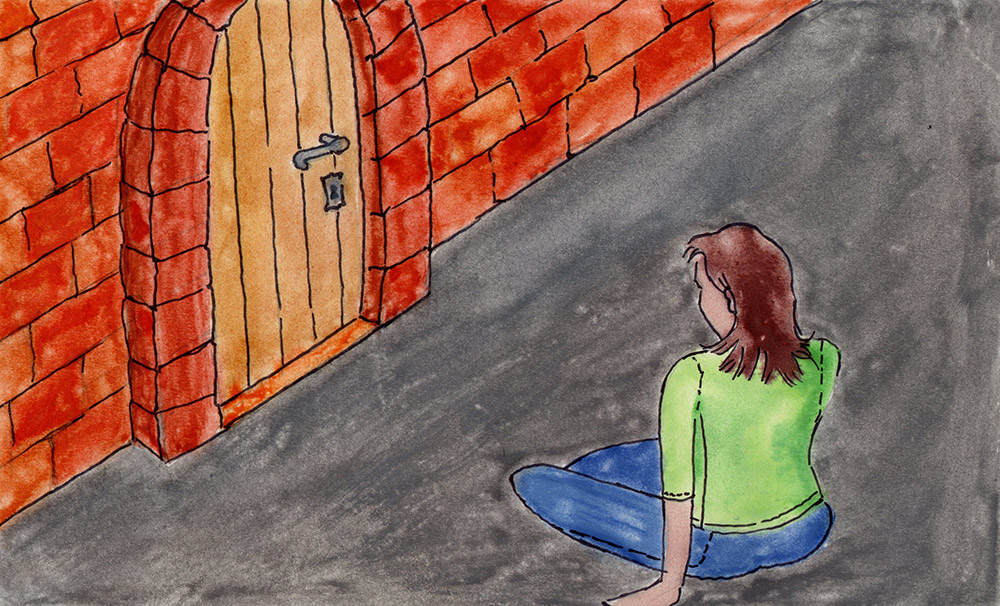
Travelling throughout the United States recently, I often heard friends express concern about the rising suicide rate and epidemic of violence sweeping the country. Individuals with no sign of being troubled suddenly turn destructive to themselves or others. While people compete for the appearance of happiness, hiding the vulnerability of inner turmoil, it’s inevitable for desperation to emerge as a wakeup call in a society disillusioned by Facebook likes.
In light of all the issues today, the inner work of freedom amidst adversity is increasingly relevant to share. And the more it’s shared the more it’s available.
The Integral Approach
Back to the ‘Mowgli syndrome’ I contracted after returning to the cement jungle of New York city after 3 years in the Amazon. I was so taken aback by the gap between phenomenal and mundane, I struggled to establish common ground with those around me, feeling my cultivation of authenticity was somehow inappropriate in a society of appearance.
I saw how conditioned society is built on the illusion that all life’s troubles should have a scapegoat. The problem is that troubled teen or that enemy nation. There are always conditions to blame for the issues that just keep coming, whether boredom or emergency. In actuality, that one troubled individual, rogue nation or even the particular issues in one’s life cannot exist without the greater organism and serve an integral role within it, whether it’s a wake-up call for distorted societal values or a lesson in vulnerability to be learned with oneself and others.
My own case necessitated me discovering how to integrate into society and stand for my values while honoring those around me, encouraging their spark underneath the appearances by seeing them as neither separate nor different from myself.
Thus, an integral approach to life is key to integration: a view that’s confirmed by the quintessence of reciprocity many ancient cultures recognize as universal law. This bird’s-eye view sees the greater whole, allowing objectivity to recognize patterns of evolution in seemingly isolated incidents, transforming the walls of separation into the shared heart of humanity. The darker the shadow, the brighter the light.
From Mystical to Practical
The European philosopher, René Descartes, famously said “I think, therefore I am,” a notion still popular in the West today. But the kind of integration I find effective can’t be found in this kind of thinking. Thinking has the tendency of going into autonomous cruise control mode if left unchecked, repeating the old stories absent of integration.
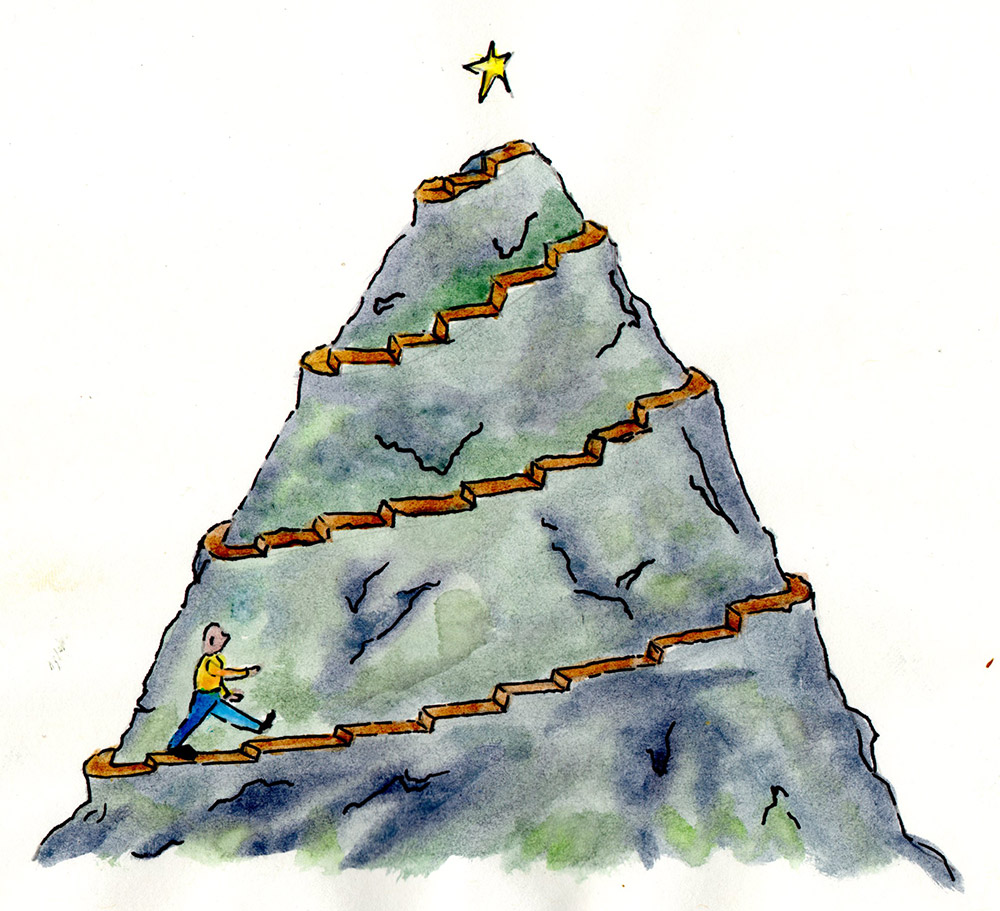
Without objective insight, there’s a tendency to interpret everything in a narrative that fits the old story to keep justifying the conditioning, sometimes in a mystical way so no real life-changing action can follow. The indigenous elders I studied with explained that fantasizing a myriad magical creatures without recognition of inner qualities they represent simply perpetuates the same external dependency, avoiding practical transformation. I’ve seen conditioning mask itself as either God or Devil, righteously voicing “important” messages of elaborate self-deception; a neurosis stemming from inaccurate mapping of the inner landscape.
Whether mythical deities or annoying people at the workplace, the principle is the same – integrating either one requires internal conflict resolution instead of finger pointing. How else could someone or something be disturbing if unresolved issues were not stirred within oneself?
Rather than allowing the mind to wander where it may, justifying the continuity of separate self, intentional thought can instead help recognize unconscious patterns of that justification. Thoughts typically dwell in the past or future, preventing the fresh and spontaneous presence of the here and now. But once they’re applied to end avoidance of what is, true identity emerges as heart wisdom, bridging the opposite ends of the gap.
The Definition of Integration
A definition offered by dictionary.com states that integration in psychology means “the organization of the constituent elements of the personality into a coordinated, harmonious whole.”
This definition is a relevant puzzle piece in the type of integration discussed here; bridging the gap between phenomenal instances offered by life’s greatest highlights, and the shadows covered up by mundane routine. The living wisdom traditions emphasize joyous glimpses of your true nature to be integrated, recognized and trusted in each breath, at all times.
In my own story shared here, I first became disillusioned with personal conditioning as an incentive to glimpse the phenomenal, followed by a motivation to turn it into a prolonged gazing period. Finally I made my life’s journey about cultivating the extraordinary in the most practical way in all circumstances of life for the benefit of all beings. That means not hiding in either spiritual or mainstream conformity but be a pillar of support in the midst of impermanence by cultivating qualities of patience, generosity, integrity, objectivity, determination, compassion and loving kindness among others.
Over many years, with the help of my cohorts at Paititi Institute, a guideline has emerged containing the essential integration facets many people have found very useful, sometimes even life-changing.
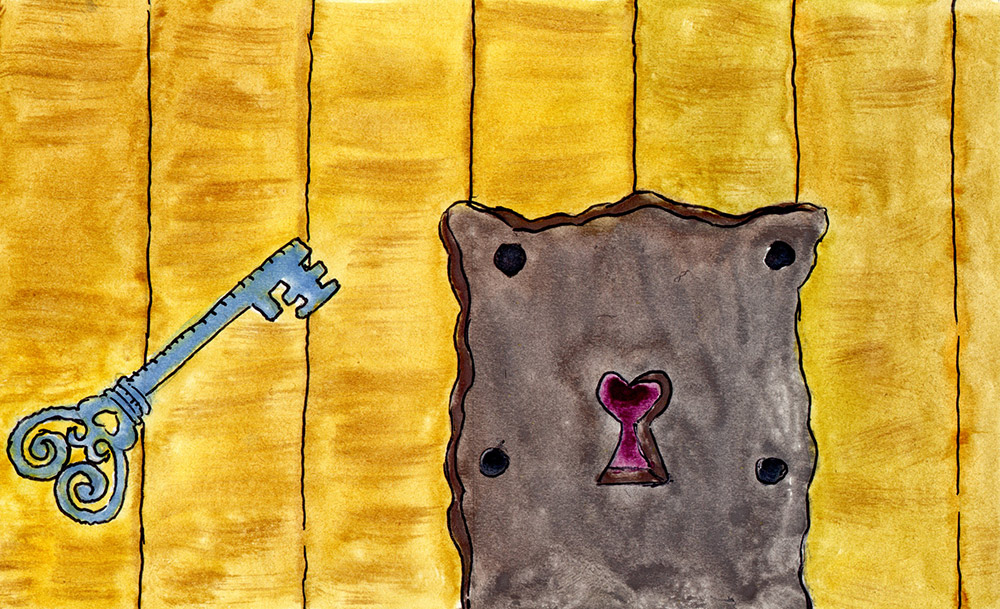
The Integration Principles
We created this reference sheet for Paititi Institute’s recommended integration principles. Click for a larger image, and feel free to download them.

